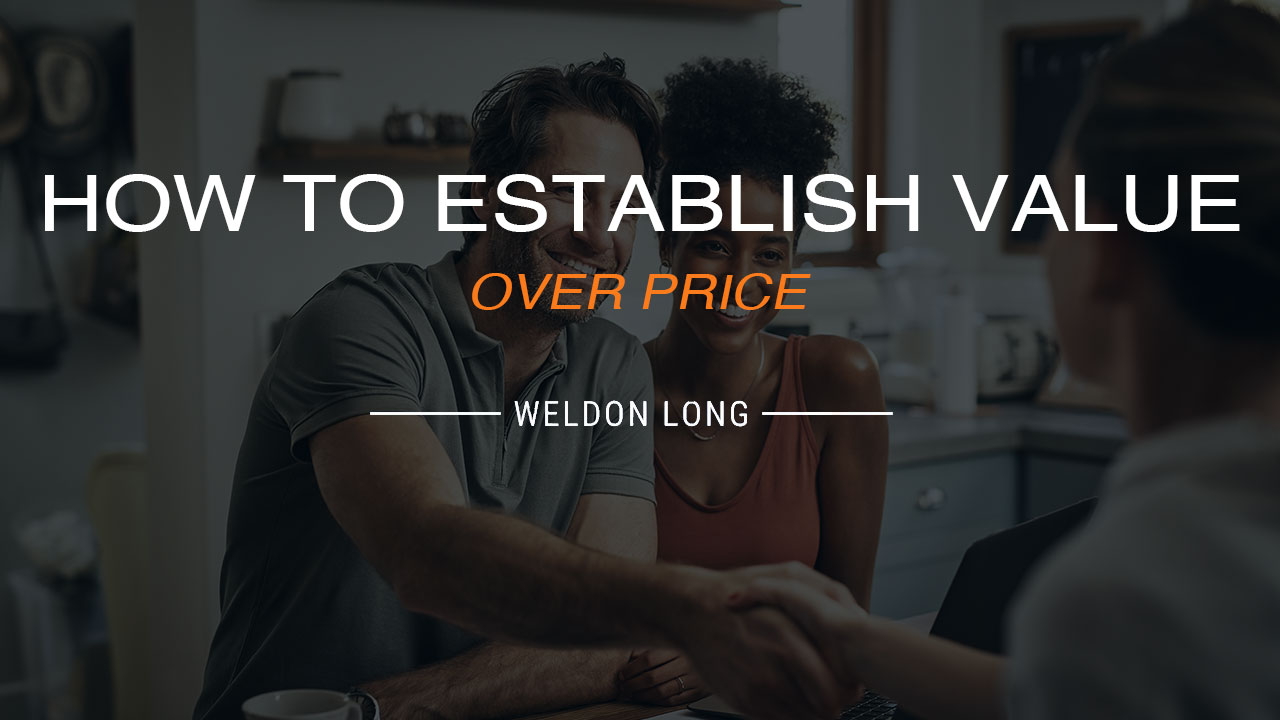How To Establish Value Over Price
December 7, 2023
Today I want to explore the art of establishing emotional and physical connections between consumers and your products and services. This connection is a pivotal aspect of marketing and sales. When dealing with products, it’s relatively straightforward; however, with services, the challenge is more complex and abstract.
Let’s focus on products this time. When you have a tangible item to sell, you can easily pinpoint specific components that make it superior. Whether it’s the materials, technology, design, or functionality, you must demonstrate to potential customers why your product stands out or why they simply can’t do without it.
I usually prefer to save the product demonstration for the end of my presentation, just before closing the deal. Why? Because it dramatically shifts the perception of value and price for the prospect. Typically, the first thought that crosses a customer’s mind when presented with a price is, “Can I find this cheaper elsewhere?” However, by showcasing the unique features and advantages of your product, you can redirect their thoughts and open up new possibilities.
So, here’s my strategy: Imagine I have a product, let’s say a remote control drone, for example. Instead of diving into the product’s presentation right away, I’d say to the prospect, “Before I discuss pricing and options, I’d like to share why my drone is superior.” I’d start with the helicopter blades, highlighting their unique composition, durability, and high-quality materials that set it apart.
Then, I’d ask a crucial question: “Do you think it costs more to produce high-tech, nearly indestructible carbon fiber blades like this, compared to a knockoff model or a cheaper competitor?” The prospect is likely to respond Yes. I’d agree with them, acknowledging that such quality does come at a higher production cost. The next step is to hand over the product, allowing them to examine it closely.
Continuing with the demonstration, I’d showcase various components, such as the drone’s camera, noting that it has the only 8K-quality camera on the market. The best a competitor has is 4K, which is becoming outdated. Again, I’d ask, “Do you think it costs more to design and produce a drone with these exceptional features that cater to your needs?” The prospect would agree, realizing that quality comes at a price. I’d mention our product carries a better warranty as well.
I’d repeat this process with as many components as possible, presenting a compelling case for why my product is superior. I usually know even before the prospect test drives (or flies in this case) the product whether or not they have been convinced. By the end of the demonstration, the prospect has not only seen but also touched and experienced the quality and value my product offers.
Now, with their perception shifted, it’s time to ask three crucial questions that will completely change the pricing dynamic:
- “When you consider that it costs more to design and produce this drone the proper way, why do you think other manufacturers skip these steps and cut corners?” The answer is typically to save money. I’d respond, “Exactly, to save money.”
- Then I’d pose a thought-provoking question, “But let me ask you this: If the competitors design an inferior product to save you a couple of bucks and it doesn’t work right or doesn’t last as long as it should, have they truly saved you money in the long run?” The answer is a resounding No.
- Finally, I’d bring it home by saying, “Here’s the thing: I know it’s natural as a consumer to inquire about receiving a discount. But now that you understand what it would take to lower the price – the shortcuts in the manufacturing process and using inferior materials – is that something you’d want from our product?” This places the responsibility on the prospect to consider the implications of compromising on quality.
By implementing this approach, you completely transform the pricing dynamic. Instead of customers approaching you with a sole focus on reducing the price, you’ve already demonstrated why your product is worth the investment. Consequently, they enter the closing sequence with a different mindset altogether.
Consumer psychologists say that a buyer usually needs one or two good experiences with a higher-end or luxury purchase to kick off a lifelong habit of buying what they consider to be better quality goods and don’t mind paying extra. They become believers that higher-priced items must inherently contain something that makes them last longer or improves their experience. It’s the reason some people buy brand-name batteries during the holidays instead of dollar batteries. And the reason some will purchase the best seats at a concert or sporting event.
Establishing an emotional and physical connection between customers and your product is essential in marketing and sales. Showcasing a product’s unique features can help shift the focus from price to value. By conducting a compelling demonstration and asking thought-provoking questions, you can lead potential customers to appreciate the benefits of investing in quality. This approach not only enhances your chances of closing a sale but also ensures that your customers make informed decisions based on value, not just price.


